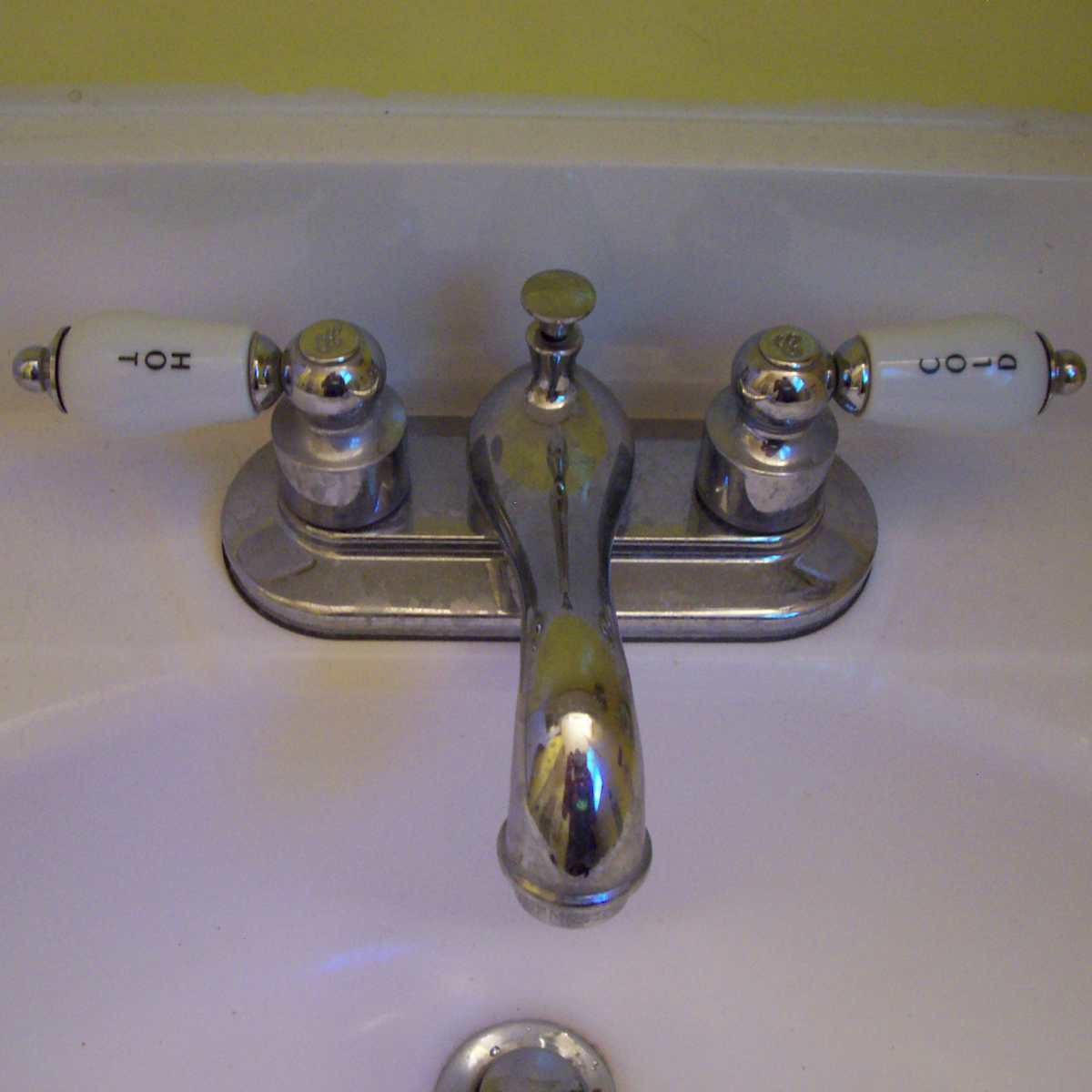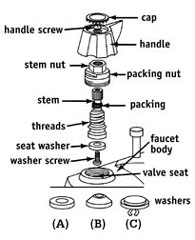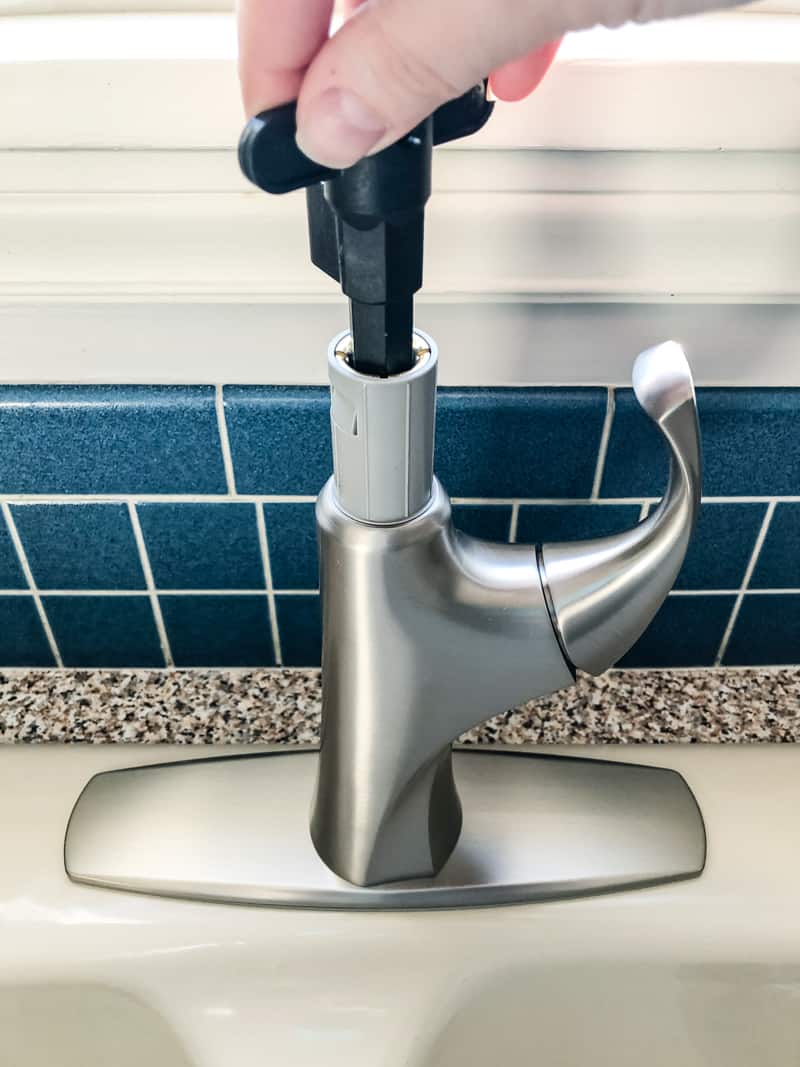Replacing Bathroom Faucet Washer
The Importance of Replacing Your Bathroom Faucet Washer
Maintaining the functionality of your bathroom faucet is essential for a smooth and hassle-free experience. One crucial component that often requires attention is the faucet washer. This small, but vital, part helps prevent leaks and keeps your faucet working efficiently. Let’s discuss the importance of replacing your bathroom faucet washer and the benefits it brings.
- Prevention of Leaks: A worn-out or damaged faucet washer can lead to leaks, causing water wastage and potential damage to your bathroom fixtures. By replacing the washer regularly, you can ensure a tight seal, preventing any leakage and keeping your water bill in check.
- Conservation of Water: A leaking faucet can waste a significant amount of water over time. According to the Environmental Protection Agency (EPA), a faucet that drips at a rate of one drip per second can waste up to 3,000 gallons of water per year. By replacing the washer, you can conserve water and contribute to a more sustainable environment.
- Avoiding Costly Repairs: Ignoring a faulty faucet washer can lead to more extensive plumbing issues down the line. A small leak can gradually damage the surrounding fixtures and even cause structural damage to your bathroom. By replacing the washer promptly, you can prevent costly repairs and ensure the longevity of your plumbing system.
- Maintaining Water Pressure: A worn-out washer can lead to decreased water pressure, affecting your overall showering or sink experience. By regularly replacing the faucet washer, you can maintain optimal water pressure, ensuring a satisfying and efficient flow every time you use your bathroom fixtures.
- Enhancing the Lifespan of Your Faucet: Proper maintenance, including replacing the washer, can significantly extend the lifespan of your bathroom faucet. A well-functioning faucet will experience less wear and tear, reducing the need for frequent repairs or replacements.
How to Replace Your Bathroom Faucet Washer
Replacing a bathroom faucet washer might seem like a daunting task, but with a little guidance, you can easily do it yourself. In this step-by-step guide, we will walk you through the process of replacing your bathroom faucet washer, ensuring a leak-free and efficient faucet.
Gather the Necessary Tools: Before starting, gather the tools you’ll need, including an adjustable wrench, screwdriver, pliers, and a replacement washer. Make sure to turn off the water supply to your faucet before beginning the replacement process.
Remove the Faucet Handle: To access the faucet washer, start by removing the handle. Depending on the type of faucet, you may need to unscrew a cap, remove a decorative cover, or simply use a screwdriver to loosen the screw holding the handle in place. Carefully lift the handle off the faucet assembly.
Locate and Remove the Washer: Once the handle is removed, you will see the stem assembly. At the base of the stem, you’ll find the washer. Use pliers to unscrew the retaining nut and remove the washer. Take note of the size and type of the existing washer to ensure you purchase the correct replacement.
Install the New Washer: Take the new washer and place it onto the base of the stem assembly. Make sure it fits securely and snugly. Use the pliers to screw the retaining nut back into place, securing the washer.
Reassemble the Faucet: With the new washer in place, carefully reassemble the faucet by attaching the handle back onto the stem assembly. Secure it with a screw or cap, depending on the faucet type.
Turn on the Water Supply: Once the faucet is reassembled, turn on the water supply and check for any leaks. If everything looks good, you have successfully replaced your bathroom faucet washer.
Signs that Your Bathroom Faucet Washer Needs Replacement
Regularly inspecting your bathroom faucet washer is crucial to ensure its optimal performance. Over time, wear and tear can cause the washer to deteriorate, leading to leaks and reduced functionality. We will discuss the signs that indicate your bathroom faucet washer needs replacement.
Dripping Faucet: One of the most common signs of a worn-out faucet washer is a dripping faucet. If you notice water continuously dripping even when the faucet is turned off, it’s a clear indication that the washer needs to be replaced.
Reduced Water Pressure: A faulty washer can result in reduced water pressure. If you notice a decrease in water flow or weak water pressure when using your bathroom faucet, it may be time to replace the washer.
Leaking Around the Faucet Base: Leakage around the base of the faucet is another sign of a worn-out washer. This can occur when the washer can no longer create a tight seal, allowing water to escape and cause damage to the surrounding area.
Difficulty Turning the Faucet Handle: If you find it increasingly difficult to turn the faucet handle or if it feels loose, it could be due to a worn-out washer. As the washer becomes worn, it may no longer provide the necessary friction to operate the faucet smoothly.
Age of the Washer: Even if you haven’t noticed any specific signs of wear, it’s a good idea to replace the faucet washer periodically based on its age. Most washers have a lifespan of around 3 to 5 years, so replacing them within this timeframe can help prevent any unexpected issues.
Visible Wear and Tear: Inspect the washer visually for any signs of damage or deterioration. Look for cracks, tears, or deformation. If you notice any significant wear and tear, it’s a clear indication that the washer needs replacement.
Choosing the Right Washer for Your Bathroom Faucet
When it comes to replacing your bathroom faucet washer, choosing the right one is crucial for a proper fit and optimal performance. With various types and sizes available, it’s important to select a washer that matches your faucet’s specifications. We will discuss the factors to consider when choosing the right washer for your bathroom faucet.
Size and Type of Washer: Faucet washers come in different sizes and types, including flat washers, beveled washers, and O-ring washers. Start by determining the size and type of washer that matches your faucet. The size can usually be identified by measuring the diameter of the existing washer or the stem it fits onto.
Material of the Washer: Faucet washers are commonly made from rubber, silicone, or nylon. Rubber washers are the most common and affordable option, offering good sealing properties. Silicone washers provide excellent durability and resistance to heat and chemicals. Nylon washers are known for their strength and long-lasting performance.
Compatibility with Faucet Brand and Model: It’s important to ensure that the washer you choose is compatible with your faucet brand and model. Check the manufacturer’s specifications or consult a professional if you’re unsure about the appropriate washer for your specific faucet.
Quality and Durability: Opt for high-quality washers that are designed to withstand frequent use and provide a long lifespan. Investing in a durable washer will save you from the hassle of frequent replacements and potential leaks.
Additional Sealing Features: Some washers come with additional sealing features, such as a beveled edge or a built-in O-ring. These features can provide enhanced sealing capabilities, reducing the risk of leaks and improving the overall performance of your faucet.
Benefits of Regularly Maintaining and Replacing Your Bathroom Faucet Washer
Regular maintenance and replacement of your bathroom faucet washer play a crucial role in ensuring the longevity and optimal performance of your faucet. Below are the benefits of regularly maintaining and replacing your bathroom faucet washer.
Preventing Leaks and Water Wastage: One of the primary benefits of regularly maintaining and replacing your faucet washer is the prevention of leaks. A faulty washer can result in water leakage, leading to water wastage and potentially causing damage to your bathroom fixtures. By proactively replacing the washer, you can prevent leaks and conserve water.
Saving Money on Water Bills: By avoiding leaks and water wastage, you can significantly reduce your water bills. Even a small leak can add up over time and result in unnecessary expenses. Regularly maintaining and replacing the washer ensures a tight seal, helping you save money on your monthly water bills.
Extending the Lifespan of Your Faucet: A well-maintained faucet with a properly functioning washer can last significantly longer. By regularly replacing the washer, you can prevent wear and tear on other components of the faucet, increasing its lifespan and avoiding the need for premature replacement.
Maintaining Optimal Water Pressure: A worn-out washer can lead to reduced water pressure, resulting in an unsatisfactory showering or sink experience. By replacing the washer, you can maintain optimal water pressure, ensuring a consistent and enjoyable flow of water.
Enhancing the Efficiency of Your Faucet: Regular maintenance and replacement of the washer can enhance the overall efficiency of your faucet. A properly functioning washer ensures smooth operation and minimizes the risk of issues such as handle stiffness or difficulty turning the faucet on and off.
Peace of Mind: Knowing that your bathroom faucet is in good condition and unlikely to develop leaks provides peace of mind. Regular maintenance and replacement of the washer give you confidence in the functionality of your faucet, allowing you to focus on other aspects of your daily routine without worrying about potential plumbing issues.
How to Fix a Bathroom Faucet
How to Repair (Not Replace) Any Leaking Bathroom Faucet
How to Fix a Washer Type Faucet Repair a Bathroom or Kitchen
Dripping Delta faucet, replacing washers.
How to Fix a Leaky Faucet Step-by-Step – This Old House
How To Fix A Leaky Delta Two Handle Faucet
How to Fix a Leaky Faucet
Fix a Leaky Faucet Double Handle DIY
How to Replace a Bathroom Faucet
Related Posts:
- 4 In Bathroom Faucet
- How To Repair Moen Bathroom Faucet Two Handle
- Leaky Bathroom Faucet Handle
- Delta Bathroom Faucet Replacement Handles
- Commercial Touchless Bathroom Faucet
- Commercial Automatic Bathroom Faucets
- Kohler Forte Widespread Bathroom Faucet
- Best Widespread Bathroom Faucet
- How To Remove A Moen Bathroom Faucet
- Wall Mount Bathroom Faucet Installation












